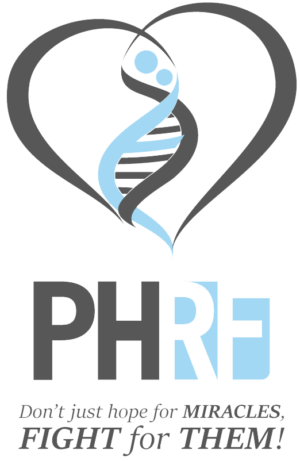Pitt Hopkins Syndrome (or PTHS) is a neurodevelopmental disorder. We currently have close to 1500 families with PTHS in our global census and this number is growing every day as genetic diagnoses increase. Tcf4, the gene that causes Pitt Hopkins is implicated in various other disorders too, including Schizophrenia , Autism, Fuchs Corneal Dystrophy, and Liver Disease. The study of this important gene could have wide reaching effects for Pitt Hopkins and beyond. Even though the cause of PTHS is known, there are currently no pharmaceutical treatments available for this disorder. The Pitt Hopkins Foundation is committed to accelerating progress toward effective treatments and ultimately a cure for PTHS, by directly funding the most promising research.
What is Pitt Hopkins?
Pitt Hopkins Syndrome (PTHS) is a rare genetic disorder affecting a specific gene in chromosome 18, called TCF4. PTHS is characterized by developmental delay, possible breathing problems of episodic hyperventilation and/or breath-holding while awake, recurrent seizures/epilepsy, gastrointestinal issues, lack of speech, and distinctive facial features. As we learn more about Pitt Hopkins, the developmental spectrum of the disorder is widening, and can also include difficulties with anxiety and ADHD, and sensory disorders.
PTHS has traditionally been associated with severe cognitive impairment, however true intelligence is difficult to measure given our children’s motor and speech difficulties. Thanks to augmentative communication and more progressive therapies, many families report that their children can achieve much more than initially thought. It has become clearer, as with autism and other disorders, that there is a wider range of cognitive abilities in Pitt Hopkins than reported in much of the scientific literature.
Pitt Hopkins syndrome is considered an Autism Spectrum Disorder, and some individuals with Pitt Hopkins syndrome have been diagnosed with Autism, with ‘atypical’ autistic characteristics, and/or Sensory Integration Dysfunction. Because of its genetic relationship to autism and other disorders, many researchers believe that curing Pitt Hopkins syndrome will lead to cures for similar disorders.
Children with Pitt-Hopkins syndrome typically have a happy, excitable demeanor with frequent smiling and laughter. PTHS was first described by D. Pitt and I. Hopkins in the Australian Pediatric Journal in 1978. The connection to TCF4 was not established until 2007 when it was found to play an essential role in the development of the nervous system and the brain. Any functional deficiency of TCF4 greatly affects how a child develops over time. See definition and statistics from the National Institutes of Health Gene Reviews article on Pitt Hopkins Syndrome.
Overall prevalence of PTHS is unknown. However, some estimates suggest that the incidence of PTHS is between 1 in 34,000 to 1 in 41,000, and also 1 in 225,000 to 1 in 300,000. (https://www.ncbi.nlm.nih.gov/books/NBK100240/). PTHS occurs in both males and females and is not limited to a specific ethnic background. We are conducting a survey to help ascertain the number of individuals with Pitt Hopkins worldwide – please join our survey to be counted in the census.
It is important to note that it is likely that there are many people affected by TCF4 mutations who have mild symptoms. With continued research and awareness of Pitt Hopkins, we hope to build a more comprehensive understanding of the spectrum of this disorder, and begin the search for a desperately needed cure.


